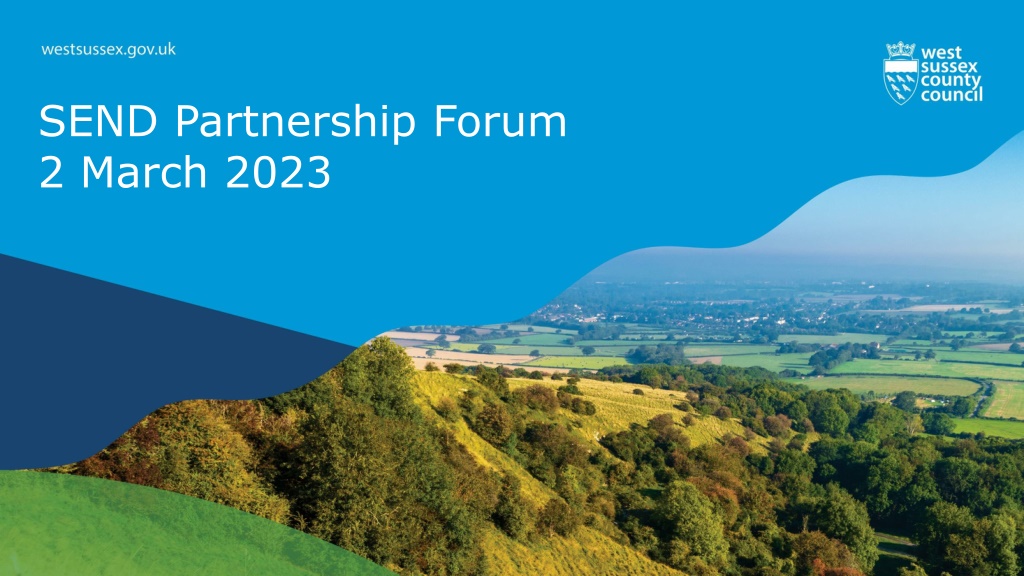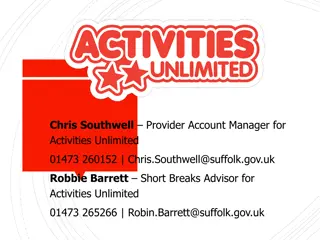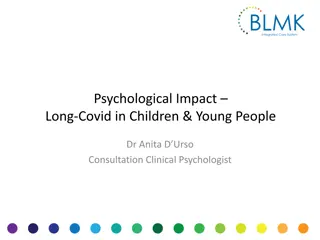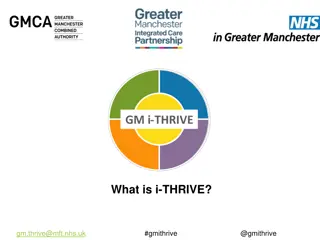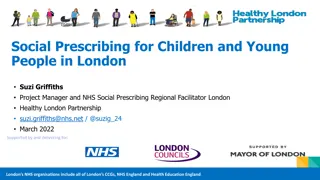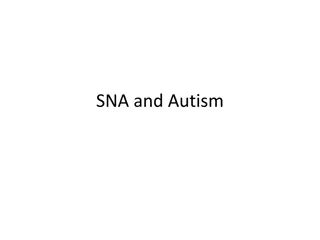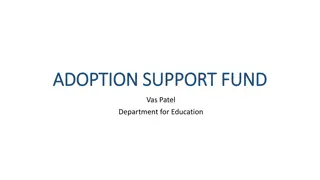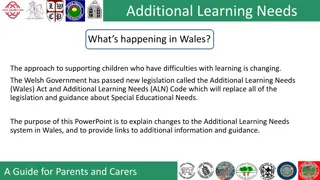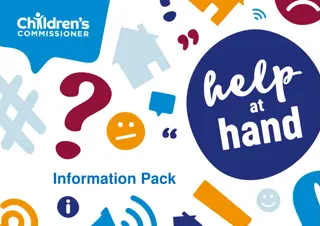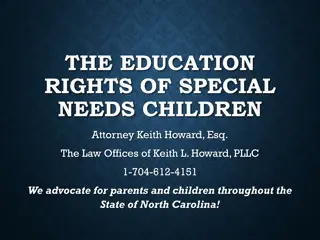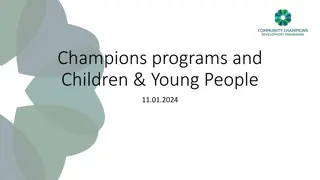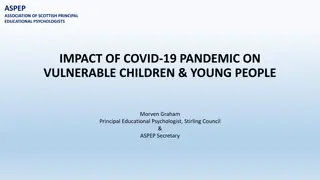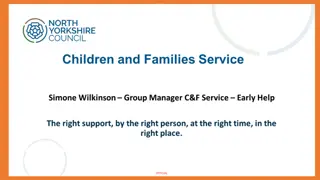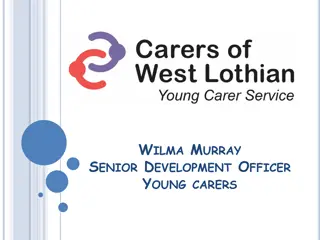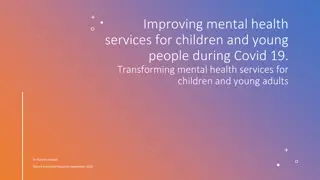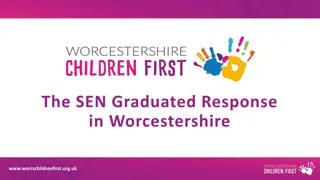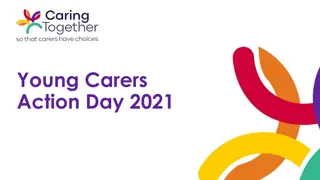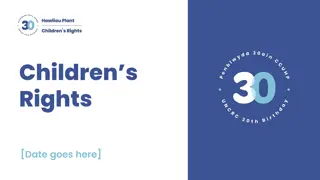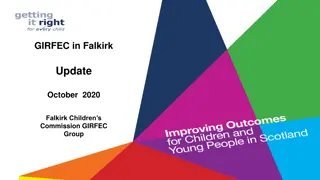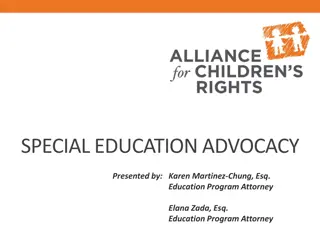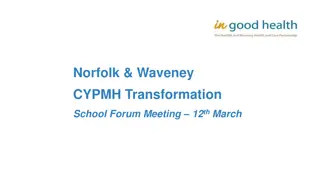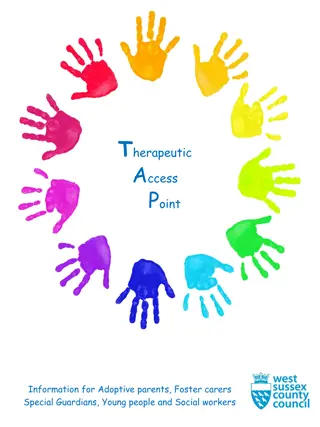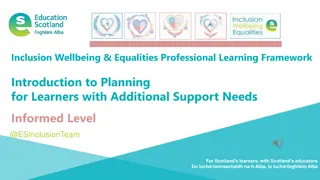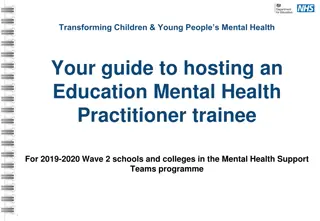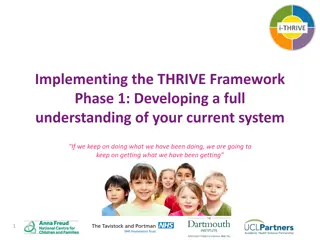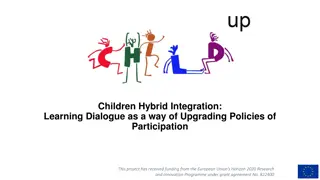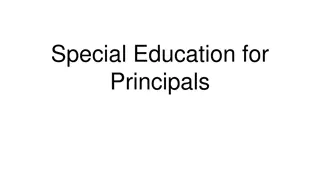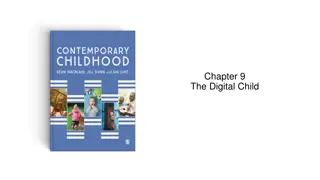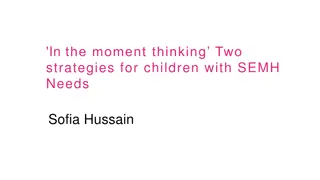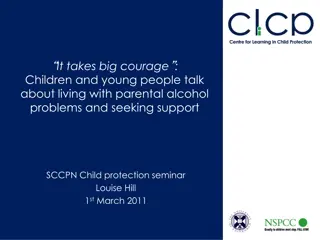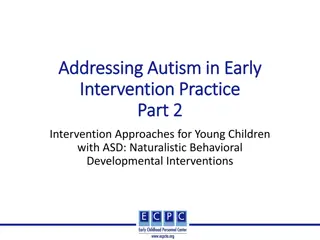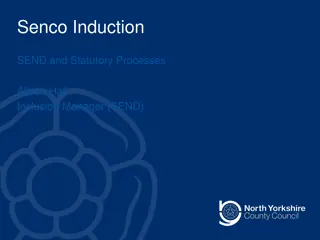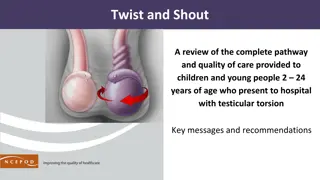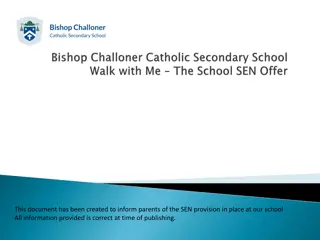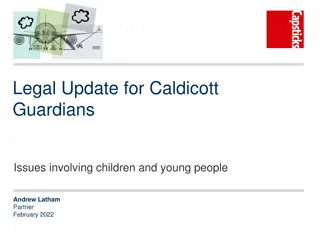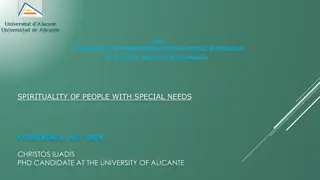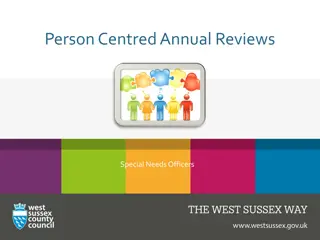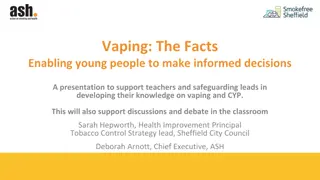Enhancing Support for Children and Young People with Special Needs
The forum discusses the accurate identification and timely assessment of children and young people with special educational needs and disabilities. It also covers the importance of involving families in decision-making processes and evaluating local authority oversight of alternative provision. Challenges in early identification, post-16 intervention, and parent communication are highlighted, emphasizing the need for improved skills and information access.
Download Presentation

Please find below an Image/Link to download the presentation.
The content on the website is provided AS IS for your information and personal use only. It may not be sold, licensed, or shared on other websites without obtaining consent from the author. Download presentation by click this link. If you encounter any issues during the download, it is possible that the publisher has removed the file from their server.
E N D
Presentation Transcript
SEND Partnership Forum 2 March 2023
Criteria for discussion / input from Forum Criteria Theme: Children and young people s needs are identified accurately and assessed in a timely and effective way 1. Children and young people are accurately identified as having special educational needs and/or disabilities 2. Children and young people s needs are identified in a timely way, so as to prevent needs from escalating 3. Practitioners assess the strengths and determine the aspirations of the child or young person alongside their individual needs 4. The criteria for carrying out assessments of need and for accessing services and support are understood, and the application of these criteria improves outcomes 5. Timely referrals are made to other services and agencies, where necessary
Criteria for discussion / input from Forum Criteria Theme: Children, young people and their families participate in decision-making about their individual plans and support 6. Children and young people access impartial information, advice and support that enable them to make informed choices about their future 7. Children, young people and families are supported to understand their rights, make choices and contribute to decision-making about their plans and support 8. Children and young people understand their plans and support, including intended outcomes, and why some changes are not possible
Criteria for discussion / input from Forum Alternative Provision. When evaluating the local authority s commissioning and oversight of alternative provision, inspectors will: 9. Meet local authority leaders to understand their strategy for alternative provision commissioning and oversight 10.Review information provided to Ofsted by the authority about its alternative provision arrangements 11.Have discussions with senior leaders and special educational needs coordinators to understand the authority s processes and decision-making 12.Review the fair access protocols 13.Carry out sampling in one or more alternative provision settings
1. Children and young people are accurately identified as having special educational needs and/or disabilities Early Years perspective: We have identified a lack of skills around child development in the early years workforce, which can hinder accurate identification of SEND. Staff need to have the skills to identify whether a child needs time to develop or if a child has SEND, and to communicate this to parents with confidence. Connected to this is the concern parents have around their child starting school. Anecdotally, we hear of schools telling parents that will only be able to support their child effectively if they have an EHCP, ie with funding. We also know from the feedback survey that parents are struggling to access information and support. Post-16 identification: Where CYP are identified as needing an EHCP at post-16, we need to unpick whether we should have intervened earlier. Sometimes needs can be met within a CYP s local community/family and it is only when they reach adulthood and are away from this support that they need help.
1. Children and young people are accurately identified as having special educational needs and/or disabilities ACTIONS: 1. Review training of staff in Early Years settings, to improve skills and confidence around child development and the mainstream offer of support in schools Grace Fairbourn 2. Review signposting for families who are looking to understand and better support their child s needs. Consider using social media more Heather McIntosh and WSPCF / subject matter experts 3. Evaluate the impact of the Early Years Advisors who are helping with transitions from early years settings to schools (team of 4 only recently established) Claire Prince 4. Reinforce the message to schools about what support should be ordinarily available, without the need for an EHCP All 5. Use Case Reviews and Invision 360 audits to unpick where earlier identification would have been possible Inclusion Leads
3. 3. Practitioners assess the strengths and determine the aspirations of the child or young person alongside their individual needs Where we re doing well: There are pockets of really strong practice in schools, where they actively seek and engage with views of CYP. S&I reviews always include conversations with CYP, as do school improvement visits. Post-16 uses person-centred tools and has evidence of good practice (NB Mental Capacity Act) EPS has done a lot of work around pupil voice and they could share more person-centred tools for use by schools and other partners SENAT views of CYP are collected via the Pupil Booklet as part of the EHCP process SENCO Conference 2023 is focused around positive CYP participation
3. 3. Practitioners assess the strengths and determine the aspirations of the child or young person alongside their individual needs ACTIONS: 1. Consider carrying out a broader survey across a selection of schools to give us a baseline of CYP views. Helen Johns 2. SATS priority is to collate examples of good practice around gathering and effectively using Pupil Voice. To add case studies on to Tools for Schools and promote widely SATS teams 3. Consider setting up Good Practice groups from the SENCO Conference Claire Prince
3. 3. Practitioners assess the strengths and determine the aspirations of the child or young person alongside their individual needs Areas for development: SEND IAS report that in meetings with CYP, professionals can sometimes do most of the talking and try and fix problems, without actually listening to CYP. Some CYP say they don t feel listened to and that their aspirations aren t being captured in Annual Reviews and other meetings they have around SEND. Need to look beyond education and find out more about how pupil voice is used within social care and health What about those CYP who have had quite a long time out of school. How do we engage with them? Where is the importance of using pupil voice in a positive way embedded in training?
3. 3. Practitioners assess the strengths and determine the aspirations of the child or young person alongside their individual needs ACTIONS: 1. Review the training around effective use of pupil voice - SATS? 2. Learning from CYP who are currently not attending school, about where things went wrong Inclusion Leads, using Case Studies, Invision 360 audits.
Next steps Next steps from SEF to Transformation from SEF to Transformation Programme Programme 1) Governance / oversight and management (RACI) across all partners 2) SEND processing - Identification/ EHCP Process / annual reviews / children not accessing any school or AP (all 0- 25) 3) Inclusive practice 4) Alternative Provision 5) Transition Management 6) QA settings (all) and Pupils and EHCP s and associated cost (Live) 7) SEN Place planning/ Sufficiency (including SSC and Special School Provision / delivery) and use of EDGE 8) Reporting/ MI 9) Synergy (currently Mosaic delivery of the original move to Mosaic not completed 5 years ago) 10)Finance (the SEN Cost) 11)Other
